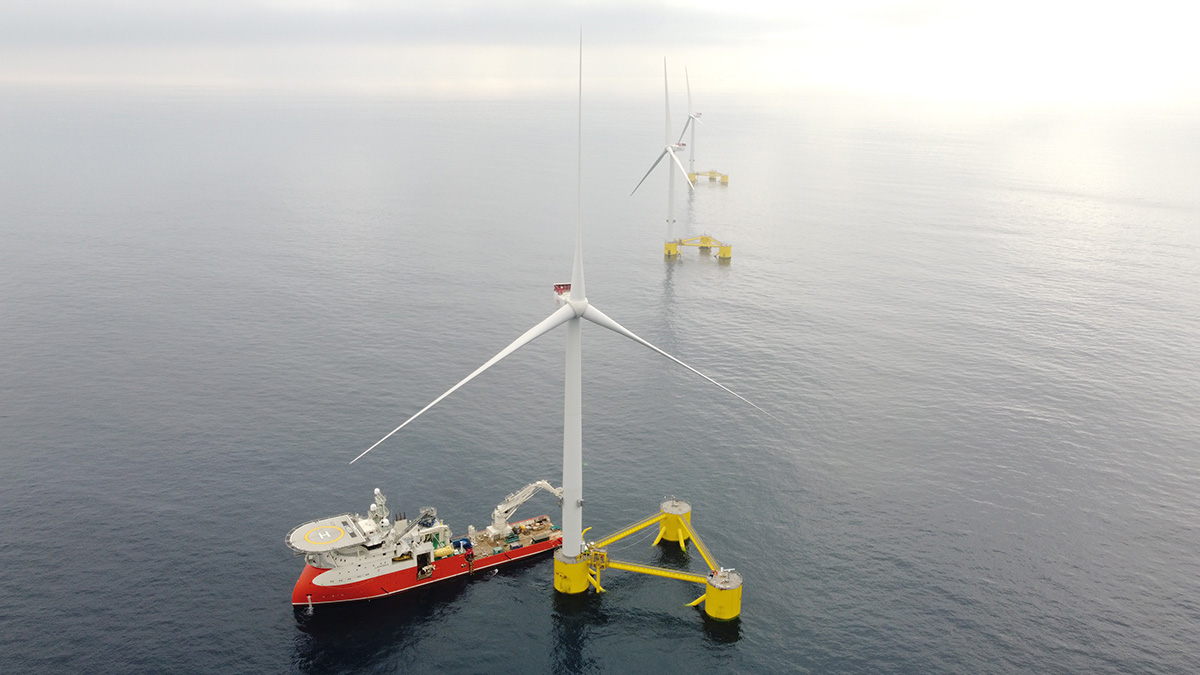News
Floating wind is making great strides
12 May 2023
The world’s largest floating wind energy event, FOWT 2023, took place on 10-12 May in Nantes. Government representatives, the wind industry and other stakeholders came together to discuss how to drive the further expansion of floating offshore wind.
Nearly all of Europe’s existing offshore wind is “bottom-fixed” right now. But that only makes sense commercially up to 60 metres sea depth. Beyond that it is more cost-competitive to install floating offshore wind turbines. Floating wind is now rapidly coming of age. And this is going to allow for offshore wind development in the Mediterranean, the Atlantic and other sea basins with high water depths.
Europe has 4 small floating wind farms today – totalling 176 MW of capacity. But France is now tendering a 250 MW floating wind farm off Brittany. And they’re about to tender 2 more 250 MW floating projects in the Mediterranean. And large-scale floating wind auctions are expected to take place this year in Spain, Portugal and Norway too. The UK has already tendered sea space development rights for over 15 GW of floating wind.
Europe can be confident it will have 3-4 GW of floating wind in operation by 2030. And it is not unreasonable to think it will have 10 GW by then if Governments back up their expansion targets with the right policies.
The next big challenge for floating wind is to consolidate the different foundation models into a few and develop large scale manufacturing, assembly and transport of those models. Unlike bottom- fixed offshore wind where the assembly and installation of turbines happen at sea, for floating wind turbines most of these activities take place around ports. The turbines themselves are the same that are used in bottom-fixed offshore wind.
Ports already need to invest significantly in space, quaysides and berths to support the transport of the rapidly growing volume of bottom-fixed wind turbines. The development of manufacturing facilities for big floating structures (e.g. a concrete or steel substructure of 3,000 tons and with 80 metre sides) will need additional investment. France and the UK are already planning public financial support for this.
Floating wind costs more than bottom-fixed offshore wind today. But the costs are coming down and will continue to do so with the use of scale-effects and the introduction of competitive auctions. The EU has contributed significantly to this cost reduction with its COREWIND project. The project optimised the design of two floating structures for a 15 MW turbine, tested new solutions for cables and mooring systems and identified improved ways of transporting, installing and operating floating wind farms. It helped reduce the cost of floating wind by up to 18%, which is equivalent to €58.8/MWh in the best scenario.
WindEurope CEO Giles Dickson said: “Floating wind is advancing at a rapid pace. The demo projects have worked. Now is the time to scale-up to large projects. Watch out for France’s 250 MW tender which will conclude this year. Floating wind opens up the Mediterranean and other deeper seas to offshore wind. Norway, Spain and Portugal all plan tenders this year. Italy, Greece and Ireland are preparing to join in soon. And the UK has big ambitions. We can expect Europe to have 3-4 GW of floating wind by 2030.”


